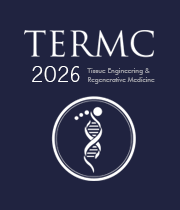Title : Characterization of CD10+ CD49a+ mesenchymal stromal cells subpopulation: Emerging evidence for their role in immunomodulation
Abstract:
Background: MSCs represent a heterogenous population of cells, which can be derived either from fetal (e.g. Wharton’s Jelly from umbilical cord, placenta, etc.) or adult human sources (e.g. Bone Marrow, Adipose Tissue, etc.). Recentrly, in our laboratory were able to isolate and characterize the CD10+ CD49a+ MSCs subpopulation from MSCs derived from Wharton’s Jelly (WJ) and Adipose Tissue (AT) sources. The CD10+CD49a+ MSCs possess advanced properties regarding the immunomodulation of immune responses, hence could be potentially used with greater potential in human immune disorders, including the autoimmune diseases and graft versus host disease (GvHD).
Aim: The aim of this study was to comprehensive characterize the CD10+CD49a+ WJ and AT-MSCs, in terms of isolation, expansion, trilineage differentiation and CD marker expression and their immunomodualatory properties.
Methods: MSCs derived from the human Wharton's Jelly (WJ, n=5) tissue and adipose tissue (AT, n=5) were isolated and expanded. Then, 4 x 106 MSCs were sorted for the CD10+ and CD49a+ using the FACS Aria flow cytometer. The sorted CD10+ CD49a+ MSCs population derived from WJ and AT, was further expanded, and differentiated to “osteocytes”, “chondrocytes” and “adipocytes”. Furthermore immunophenotypic assessment regarding the expression of CD73, CD90, CD105, CD340, CD29, CD44, HLA-ABC, HLA-DR, CD34, CD45, CD11b was performed in BD FACS Canto II flow cytometer. Finally, for the immunomodulatory evaluation, both MSCs subpopulations were initially stimulated with IFN-γ (100 ng/ ml) for 48h, in a culture medium consisted only from a-MEM and 1% L-glutamine. The supernantants were retrieved, and quantification of IL-1Ra, IL-6, IL-10, IL-13, TGF-β1, VEGF-a, FGF, PDGF, and IDO was performed using commercial ELISA kits. The expression of HLA-G1, G5, and G7 was also evaluated, through the performance of mRNA isolation and RT-PCR and further confirmation by indirect immunofluorescence and flow cytometry. In addition co-culturing with M1 macrophages was performed to verify the exerted immunomodulation of either CD10+ CD49a+ WJ and AT-MSCs.
Results: CD10+ CD49+ were successfully isolated either from WJ or AT-MSCs, however the significant difference was observed in the percentage of enriched MSCs subpopulation. Specifically, the presence of CD10+CD49a+ in WJ-MSCs was 90% while in AT-MSCs was in 40%. CD10+CD49a+ MSCs from both sources, successfully differentiated to “osteocytes”, “chondrocytes” and “adipocytes”.CD10+CD49a+ WJ and AT-MSCs characterized by positive expression for CD73, CD90, and CD105 (> 95%) and negative for CD34, CD45, and HLA-DR (< 2%). CD10+CD49a+ WJ-MSCs expressed the CD340 more than 80% whereas the AT-MSCs subpopulation > 60%, which was found statistically significant. Stimulated CD10+CD49a+ WJ and AT-MSCs secreted high levels of IL-1Ra, IL-6, IL-10, IL-13, TGF-β1, FGF, VEGF, PDGF, and IDO after 48h. CD10+CD49a+ WJ expressed all the HLA-G isoforms, whereas the CD10+CD49a+ AT-MSCs only the HLA-G1. Finally, M1 macrophages successfully adapted the M2 phenotype after co-culturing with CD10+CD49a+ WJ and AT-MSCs.
Conclusion: Based on the above results, WJ-MSCs is a more attractive source for the isolation of the aforementioned MSCs subpopulation compared to the AT-MSCs. However, both exert significant immunomodulatory properties for regulating properly the immune responses, thus can be used in the human immune disorders.
Audience Take Away Notes:
- Present the current status of Mesenchymal Stromal Cells
- Present modern mechanisms regarding the immunomodulatory/ immunoregulatory role of MSCs
- Evaluation of immunoregulatory properties between CD10+CD49a+ WJ and AT-MSCs
- Discuss the specific mechanism of action, through which the MSCs can exhibit their beneficial properties in immune-related disorders



